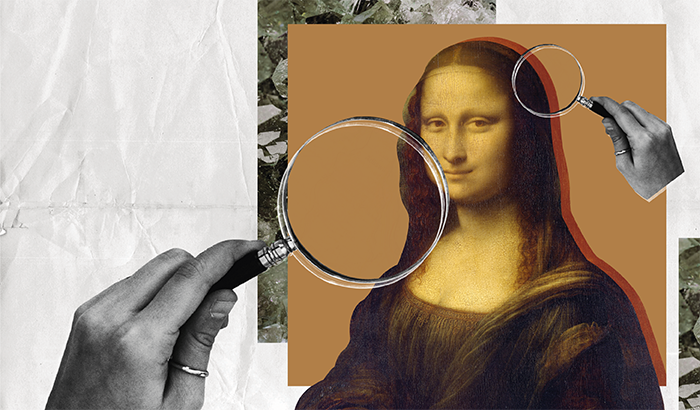Toxic palette. Leonardo da Vinci is known for his unusual painting practices, one of which has recently been unveiled by a French research group. The scientists employed X-ray diffraction and infrared spectroscopy to analyze microsamples from two of his most famous creations – the Mona Lisa and the Last Supper – to shed light on the pigments and techniques he employed. Plumbonacrite – a toxic and rare lead compound that results from a reaction occurring between the oil and lead oxide – and shannonite were found in both art pieces. Despite the polymath not discussing the use of lead oxide in his manuscripts extensively, the study suggests the compound was indeed part of his palette – possibly being the first one to use it, as plumbonacrite and shannonite have yet to be found in other historical paintings.
Imaging wars. Visualizing enzyme activity in cancerous cells could be critically useful for diagnosis and prognosis, but the lack of highly specific imaging tools has been a roadblock. Now, researchers from the US and China developed NanoSABER – an enzyme-responsive intracellular Raman imaging nanoprobe. The team successfully obtained an optical output of the tumor-specific enzyme, legumain, using their design – paving the way for Raman-based multiplexed molecular imaging. “The probes’ ability to offer a clear look at the molecular, cellular, and tissue levels provides a comprehensive perspective,” said lead author Swati Tanwar, in a press release.

Ancient seawater. In the hope of answering how life started on Earth, scientists from the University of Oxford, UK, and the University of Cape Town, South Africa, recreated Archean seawater – studying the minerals and metals that favored early evolution. The team employed X-ray absorption spectroscopy to directly study seawater chemistry – confirming the speculations of biologists that greenalite was necessary for early life forms. “This work highlights how critical the information provided by X-ray absorption spectroscopy can be for environmental science research. XAS is a unique technique, which can be applied to complex systems where the important information is concealed in components that represent just a minor fraction of the material under study,” said Giannantonio Cibin, former Principal Beamline Scientist for the B18 beamline in a press release.
Decoding smiles. What really makes a smile healthy? Scientists from Finland, Sweden, and Austria have collaborated to investigate and identify, for the first time, the metabolic signatures of oral diseases. The team characterized 157 metabolites – employing nuclear magnetic resonance spectroscopy – linking them back to periodontal inflammation, gum bleeding and other symptoms of oral conditions. The authors conclude these mouth diseases and caries could be associated with cardiometabolic diseases, such as heart attacks and diabetes. “The observation is novel, since there are only few studies connecting extensive metabolic measures with oral infections, and no earlier prospective studies exist,” said corresponding author Pirkko Pussine in the press release.
Researchers use X-ray spectroscopic methods to successfully characterize the photogeneration and photolytic delivery of a Fe-NO complex – a promising therapeutic molecule thanks to its antioxidant properties. Link
Penn State scientists spectroscopically confirm – with NASA’s James Webb Telescope’s Near-Infrared Camera (NIRCam) – the existence of two of the most distant galaxies. Link
Proton magnetic resonance spectroscopy images show how heart defects disrupt metabolomic processes in the developing brain – opening pathways to improve medication and care for newborns with congenital heart disease. Link
Research informed by Raman spectroscopy finds that a lithium ceramic could act as a solid electrolyte in more powerful and cost-efficient generation of rechargeable lithium-ion batteries. Link
Researchers identify the oldest pieces of Baltic amber found on the Iberian Peninsula using infrared spectroscopy – imports began over 5,000 years ago. Link
Ex vivo confocal Raman micro-spectroscopy reveals that e-cigarette liquid can cause the dehydration of collagen in the lung. Link
Images for collage sourced from Pexels.com Mona Lisa by Leonardo da Vinci sourced from Wikipedia




